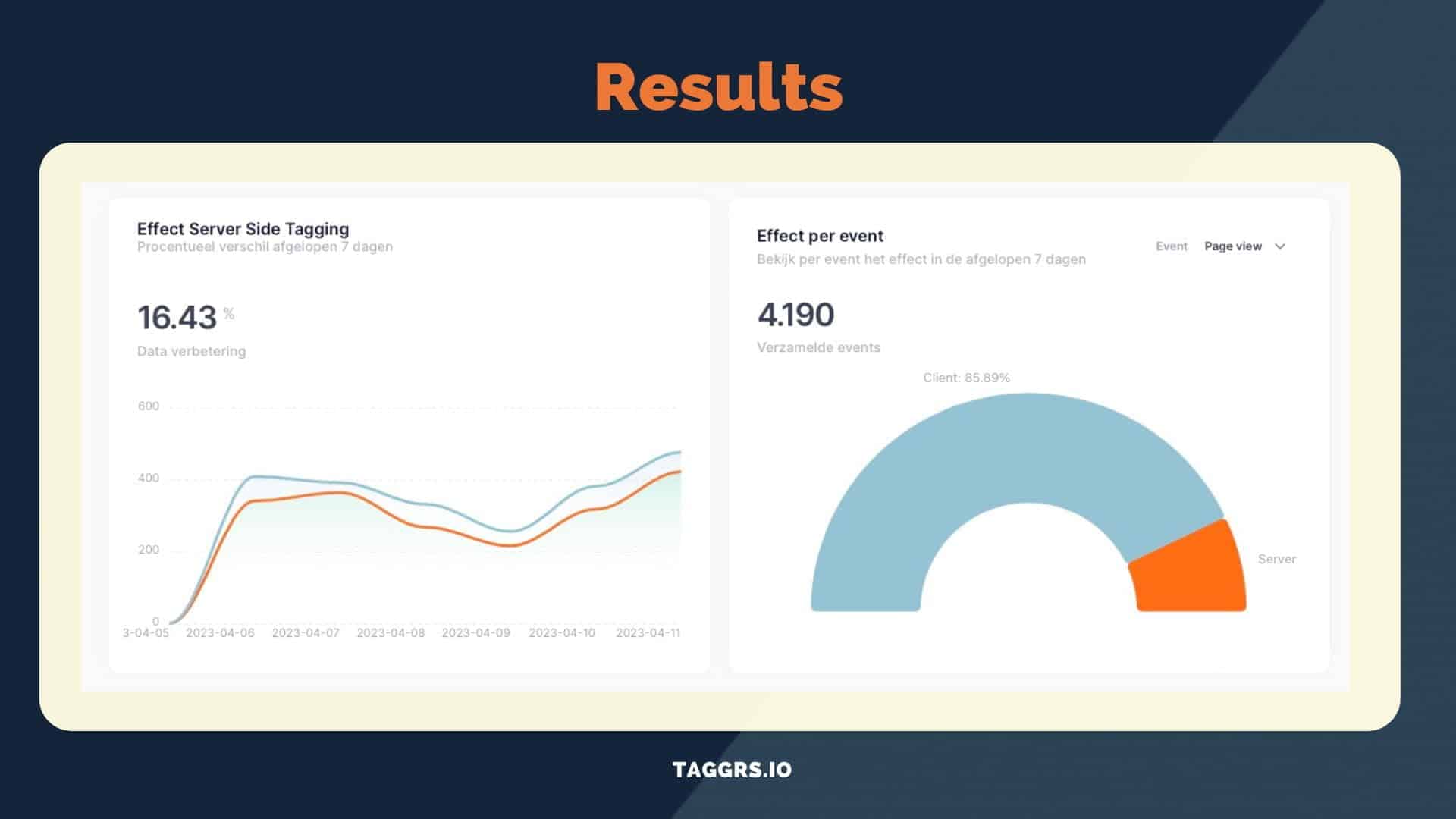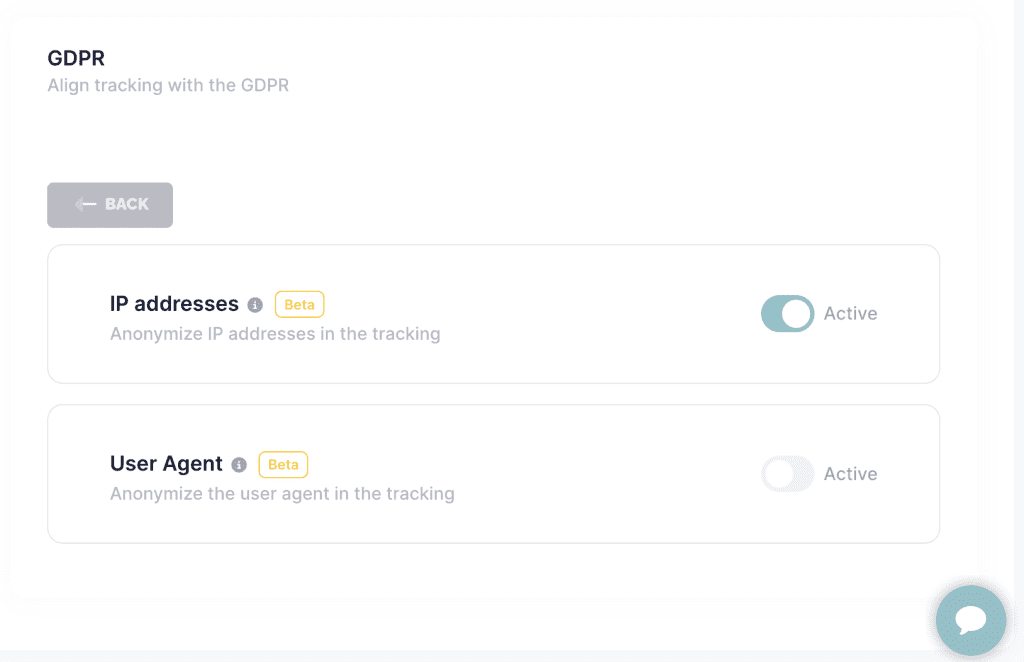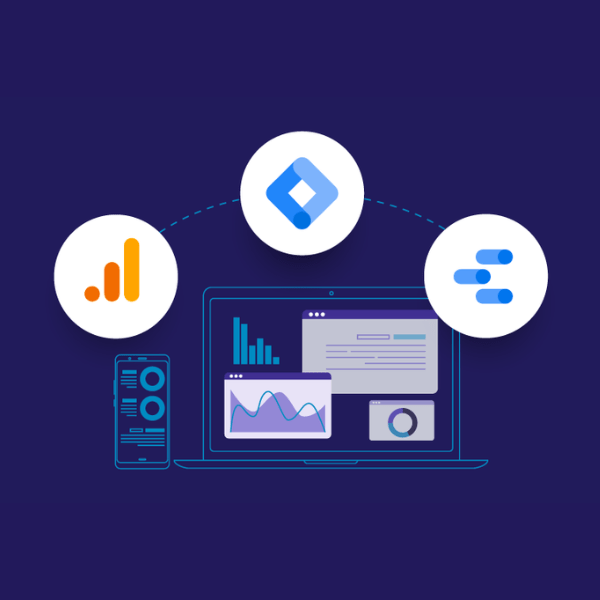Server Side Tracking is an important evolution in online data tracking. The benefits are not only measuring more conversions, but it also gives more control and flexibility over your data structure. Still, the increase in measurability is the main reason for many companies and agencies to move from client side, to Server Side Tracking.
On average, this switch yields 10-30% more data and recorded conversions (purchases/leads). There are several factors that cause you to record more conversions, both direct and indirect. In addition to registering more conversions, Server Side Tracking also creates additional new conversions in many cases. In this blog, we explain how Server Side Tracking increases conversion registrations and additional new conversions.
To explain this properly, we make the following distinction: The ways in which SST (in GTM) directly increases conversions and the ways in which it does so indirectly.
TAGGRS offers the ability to self-monitor the effect. However, this only allows you to monitor the direct effect on measurability. In this blog, we describe the full effect on your marketing campaigns.
Table of Contents
1: The direct effect
By direct effect, we mean the way Server Side Tracking in Google Tag Manager (with TAGGRS’ software) provides a direct increase in measurability.
1.1 Ad blockers and tracking prevention
Server Side Tracking provides an immediate increase in measurable data. This increase occurs because of two things:
- You bypass ad blockers that e.g. Block GA4, Meta and Google ads cookies
- You bypass the tracking prevention of browsers (Safari, Firefox, Edge, Brave)
Iphone users have the option of indicating that they want to disable tracking. This ensures (with client side tagging) that third pary cookies are completely blocked. As a result, you can no longer record conversions with this Internet user.
With Server Side Tracking from TAGGRS, tracking cannot be blocked and you also place first-party cookies (If you configure TAGGRS on your own subdomain).
The combination of bypassing ad-blockers and tracking prevention provides an immediate increase 5- 30% in measured pageviews and conversions. The differences per website can be very large, depending on the user.

1.2 Enhanced tracking script
There are many different types of ad blockers. Some are more advanced than others. There are ad blockers that block Google Tag Manager completely. These recognize Google Tag Manager’s tracking script. In this case, both client side and Server Side Tracking are blocked and you have no tracking.
TAGGRS has developed a solutions for this: The enhanced tracking script. This tool is available to all TAGGRS customers. The tool provides an adjustment to the standard tracking script. This modification ensures that Ad blockers do not recognize the code as GTM.
Our research shows that this provides a 1-2% increase in measurability. This increase applies to both client side and server side, so your client-side tags will also start to register more data. However, using the Enhanced tracking script is only possible in combination with GTM Server side tagging with TAGGRS.
Thus, implementing the Enhanced tracking script does not increase the difference between client side tagging and Server side tagging. It causes both to increase in quantity. Therefore, in the analysis tool, you will see little to no increase in the difference (Client vs. Server side).
We try to make it as easy as possible for customers, so we created a sample implementation and a free GTM Copy Paste extension for easy copying and pasting of GTM elements.
2: The indirect effect
Most marketers and developers will be particularly familiar with the above benefits of Server Side Tracking. However, there are also other benefits that indirectly cause you to record and generate more conversions. Here are the key benefits.
2.1: The data quality
Server Side Tracking gives much more control over your data. You are in the lead and can enrich or anonymize the data at any time.
Previously, Google and META had free rein and could build profiles per Internet user through cross site tracking. This allowed them to register interests and buying signals very accurately. Advertisers again eagerly took advantage of that. From a privacy perspective, this is no longer desirable. Cross site tracking and third party cookies are being increasingly reduced. This causes ad platforms to record less and less (user) data. The quality of the targeting options flies as a result. Try targeting by interests in META again!
To still understand who your customers are, Google and META themselves ask you to send user data along with conversions. Enhanced conversions is what Google calls this, for example. Google indicates that this will generate 3-5% additional conversions in your campaigns.
Server Side Tracking is great for enriching your data so you can send it along to ad platforms. The server container operates as an HTTP API endpoint. This allows you to send data to Google Tag Manager from a variety of sources. Consider, for example, your CRM data. This way, you can get additional user data into GTM and co-send it to the ad platforms. Result: More conversions in your campaigns.
2.2 Website speed
In client side tagging, the various scripts are loaded into the user’s browser. So this impacts the loading speed of the website. The more tracking, the more impact on loading speed. You obviously don’t want this, because load speed affects conversion rate and is an important ranking factor for SEO.
With Server Side Tracking, the scripts are loaded into the server, so this does not affect the loading speed of the website. The complete transition from client to server side, therefore, improves loading time. How much this improvement will be is hard to say. This is different for each website.

2.3 Cookie extension
This is an important, underexplored benefit of Server Side Tracking. Earlier in this blog, we described the rise of tracking prevention. The first version of this was launched in 2017. This kept ad platforms from cross-site tracking. In 2019, a restriction was added: The lifetime of third-party cookies was limited from 30 to max 7 days. After that, the cookie is automatically deleted.
If the conversion of the person who clicked on the ad does not occur within 1 or 7 days, it is not attributed to the campaign. For example, consider a major purchase like a car. When someone comes across a car in an online campaign, clicks and is interested, but does not convert until two weeks later, the conversion is not attributed to the ad campaign. Shame, because this was the trigger.
Little known fact: When you include parameters in the URL, for example UTM tags, the cookie life is limited to 1 day in Firefox and Safari!
TAGGRS Cookie Recovery allows you to extend the life of cookies in browsers with tracking prevention. This ensures that you can attribute all conversions generated from the campaign to the correct source.
2.4 Retargeting
Following on from the previous point, we would also like to highlight the effect on retargeting. Generally, these are high-yield campaigns. The target audience consists of people who are already familiar with your company and product.
By shortening the lifespan of cookies or blocking tracking entirely, retargeting is becoming increasingly difficult. As a result, you can generate fewer conversions from users who may be interested.
With Server Side Tracking, you bypass tracking prevention and can extend the life of cookies. This has a big impact on the effectiveness of your retargeting campaigns.

Other benefits
The above list cover the main benefits of Server Side Tracking. In particular, these address the benefits of additional data. There are a number of other benefits that we still want to briefly mention in this blog for a complete picture.
GDPR proof
With Server Side Tracking via TAGGRS, you collect the data. In addition, you can modify and anonymize them before sharing them with parties such as Google. So you are completely in control of your own data. This is much more in line with the essence of the GDPR.
Safety
Having control and access to your own data also allows you to better shield it from potential misuse. The data is collected in your own server, so it no longer goes through the user’s devices. This makes it much better shielded.

By moving data processing from the user devices to the server, transactions can be conducted safely and with appropriate security credentials without exposing sensitive information.
For example, a known problem with Google Analytics is spam due to the so-called Measurement Protocol. Hackers send fake website hits via automated HTTP requests. To prevent this, you can use Server Side Tracking to set up a special “dimension” in your server. When you send this information to Google Analytics, you can create a filter that only allows traffic that matches this dimension. This effectively blocks spam.
Cookie banner configuration
In line with the GDPR, the use of a cookie banner on your website is mandatory. Based on the consent given by website users, tags should be fired/not fired in GTM. By applying Server Side Tracking in GTM, you can more easily adapt your setup to cookie banner consent on your website.
In conclusion
This blog discussed the benefits (both direct and indirect) of implementing Server Side Tracking. The goal of TAGGRS is to make these benefits available to as many marketers and developers as possible. Should you, like us, get tremendously excited about this, start TAGGRS for free. Want to learn more about the benefits for your situation first? Then send us a message!
Curious about the complete setup? Then check out our Ultimate Server Side Tracking Checklist.
See you on the server side!
About the author

Ate Keurentjes
Server Side Tracking Specialist at TAGGRS
Ate Keurentjes is a Server Side Tracking specialist at TAGGRS. He has experience with various Google Tag Manager concepts. Keurentjes has been editing and writing about the latest developments and trends in data collection / Server side tracking since 2023.
